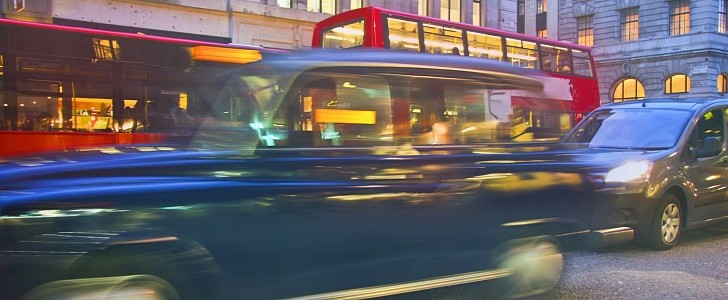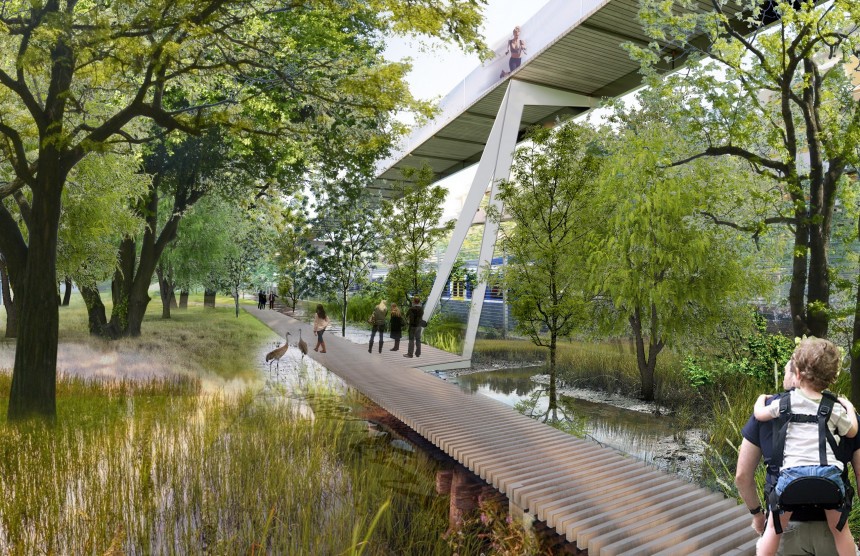Even before the Dieselgate scandal, there have been people who were in favor of banning internal combustion-engined vehicles from entering cities or certain zones of cities without paying. Every time the rules were changed, people got angry. Why? Because it costs them money.
I recently read an article about a couple who has lived in South East London for the past 32 years and have found themselves on the recently extended ULEZ boundary when the rules have changed. With the extension of the Ultra-Low Emission Zone, they have to pay GBP 12.50 (ca. $16.68) every time they turn left out of their driveway unless they get newer vehicles.
London's ULEZ zone was first implemented back in April 2019, and it was first covered the same area as the London Congestion Charge Zone. The latter was introduced back in 2003 and was first introduced as a charge for those who wanted to drive into London at peak times on weekdays.
Ever since August 1, 2020, not even residents can get discounts from the London Congestion Charge, but at least they did for a while, which gave them time to sell non-compliant vehicles. Moreover, the ULEZ charge is different from London's Congestion Charge.
Until December 2025, drivers of zero-emission vehicles are exempt from London's Congestion Charge. Drivers of this category of vehicles are exempt from paying London's ULEZ charge. For now, because I suspect this exemption will not last after the sale of vehicles with internal combustion engines is stopped.
As most of you know, zero-emissions vehicles are not exactly cheap, while getting the most affordable one on the market might not be the one-to-one replacement of each combustion-engined vehicle.
In other words, most people cannot buy or lease an electric vehicle or an FCEV that will do everything that their internal combustion-engined vehicles can do today. In the case of a van, for example, a person would have to buy a Euro 6-compliant diesel-engined vehicle to be ULEZ-compliant. The same goes for any diesel-engined vehicle, while gasoline-engined vehicles are ULEZ exempt if they come with at least an Euro 4-compliant engine. Motorcycles and motorizede tricycles are allowed as long as they are Euro 3 compliant.
Furthermore, most people cannot afford to replace their existing vehicles with EVs. As some representatives of vehicle manufacturers have publicly admitted, not everyone will get to have an electric vehicle in the future.
I have found two issues at hand here, which will lead to the same conclusion. The first issue is that people who cannot afford to change their vehicles will be between the hammer and the anvil, as their existing vehicles will be difficult to sell at a reasonable price since they are subjected to a ULEZ charge, which limits the potential customer base.
In other words, they would have to find a customer who has no business in the ULEZ zone to sell their vehicle, and potential customers will take advantage of this and lower their offer.
Meanwhile, the other issue is that many people rely on their vehicles to make a living, and forcing them to a considerable expense just to comply with rules and to stop paying a daily tax is nothing short of a nightmare for someone trying to make ends meet.
Imagine a contractor, a builder, or a person making deliveries with their vehicle. Paying the ULEZ tax each day will cost them a hefty sum at the end of the year.
At the end of the day, the GPB 12.50 (ca. $16.68) tax does not make the air any cleaner, does it? On the other hand, the city's administration gets a “healthy” source of income that can be seen as a greenwashed tax.
The couple I read about in MyLondon bought a new automobile and paid GBP 7,000 (ca. $9,340) for a new van (probably a lease). All because they lived at the border of the ULEZ zone, which was expanded in the name of improved air quality. Now, what if they could not afford to get a new vehicle and lease a compliant van?
With that in mind, think of the people who live just across the street from the couple mentioned in the article. Or those who live on the border of ULEZ zones and own the homes they live in and cannot easily move someplace else. Do they not deserve clean air as well? Of course, they do!
Everyone deserves clean air if you ask me, but that is not the issue.
The problem here is that politicians have found yet another low-hanging fruit here, in the form of another tax on vehicle owners and drivers in general. As you may have observed, taxes imposed on those who own vehicles are the easy ticket for any politician when promising to make the world a greener place.
Do you see where this is going? Under the claim of clean air in a particular zone, everyone who drives a vehicle that does not meet certain characteristics must pay a tax to enter the area.
That tax does not make the air cleaner, but just makes those who pay it just have less money than they did earlier. And this repeats itself every time they enter the area with the vehicle, which some might say turns the ULEZ charge into a tax on poverty, not just on property or access to a certain area.
Yes, that is the problem here. Drivers have been politicians' and environmentalists' “favorite” culprits for everything related to the environment. Instead of finding ways to improve the economy so that more people could afford newer vehicles that produce fewer emissions, they imposed taxes on those who could not afford to change their vehicles as soon as the new tax was applied.
Is that fair? I do not think it is fair at all, and this is not the only example where this happens. It is just the most recent that came into my mind.
London's ULEZ zone was first implemented back in April 2019, and it was first covered the same area as the London Congestion Charge Zone. The latter was introduced back in 2003 and was first introduced as a charge for those who wanted to drive into London at peak times on weekdays.
Ever since August 1, 2020, not even residents can get discounts from the London Congestion Charge, but at least they did for a while, which gave them time to sell non-compliant vehicles. Moreover, the ULEZ charge is different from London's Congestion Charge.
Until December 2025, drivers of zero-emission vehicles are exempt from London's Congestion Charge. Drivers of this category of vehicles are exempt from paying London's ULEZ charge. For now, because I suspect this exemption will not last after the sale of vehicles with internal combustion engines is stopped.
As most of you know, zero-emissions vehicles are not exactly cheap, while getting the most affordable one on the market might not be the one-to-one replacement of each combustion-engined vehicle.
In other words, most people cannot buy or lease an electric vehicle or an FCEV that will do everything that their internal combustion-engined vehicles can do today. In the case of a van, for example, a person would have to buy a Euro 6-compliant diesel-engined vehicle to be ULEZ-compliant. The same goes for any diesel-engined vehicle, while gasoline-engined vehicles are ULEZ exempt if they come with at least an Euro 4-compliant engine. Motorcycles and motorizede tricycles are allowed as long as they are Euro 3 compliant.
Furthermore, most people cannot afford to replace their existing vehicles with EVs. As some representatives of vehicle manufacturers have publicly admitted, not everyone will get to have an electric vehicle in the future.
I have found two issues at hand here, which will lead to the same conclusion. The first issue is that people who cannot afford to change their vehicles will be between the hammer and the anvil, as their existing vehicles will be difficult to sell at a reasonable price since they are subjected to a ULEZ charge, which limits the potential customer base.
In other words, they would have to find a customer who has no business in the ULEZ zone to sell their vehicle, and potential customers will take advantage of this and lower their offer.
Imagine a contractor, a builder, or a person making deliveries with their vehicle. Paying the ULEZ tax each day will cost them a hefty sum at the end of the year.
At the end of the day, the GPB 12.50 (ca. $16.68) tax does not make the air any cleaner, does it? On the other hand, the city's administration gets a “healthy” source of income that can be seen as a greenwashed tax.
The couple I read about in MyLondon bought a new automobile and paid GBP 7,000 (ca. $9,340) for a new van (probably a lease). All because they lived at the border of the ULEZ zone, which was expanded in the name of improved air quality. Now, what if they could not afford to get a new vehicle and lease a compliant van?
With that in mind, think of the people who live just across the street from the couple mentioned in the article. Or those who live on the border of ULEZ zones and own the homes they live in and cannot easily move someplace else. Do they not deserve clean air as well? Of course, they do!
Everyone deserves clean air if you ask me, but that is not the issue.
The problem here is that politicians have found yet another low-hanging fruit here, in the form of another tax on vehicle owners and drivers in general. As you may have observed, taxes imposed on those who own vehicles are the easy ticket for any politician when promising to make the world a greener place.
Do you see where this is going? Under the claim of clean air in a particular zone, everyone who drives a vehicle that does not meet certain characteristics must pay a tax to enter the area.
That tax does not make the air cleaner, but just makes those who pay it just have less money than they did earlier. And this repeats itself every time they enter the area with the vehicle, which some might say turns the ULEZ charge into a tax on poverty, not just on property or access to a certain area.
Yes, that is the problem here. Drivers have been politicians' and environmentalists' “favorite” culprits for everything related to the environment. Instead of finding ways to improve the economy so that more people could afford newer vehicles that produce fewer emissions, they imposed taxes on those who could not afford to change their vehicles as soon as the new tax was applied.
Is that fair? I do not think it is fair at all, and this is not the only example where this happens. It is just the most recent that came into my mind.









